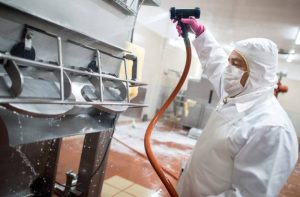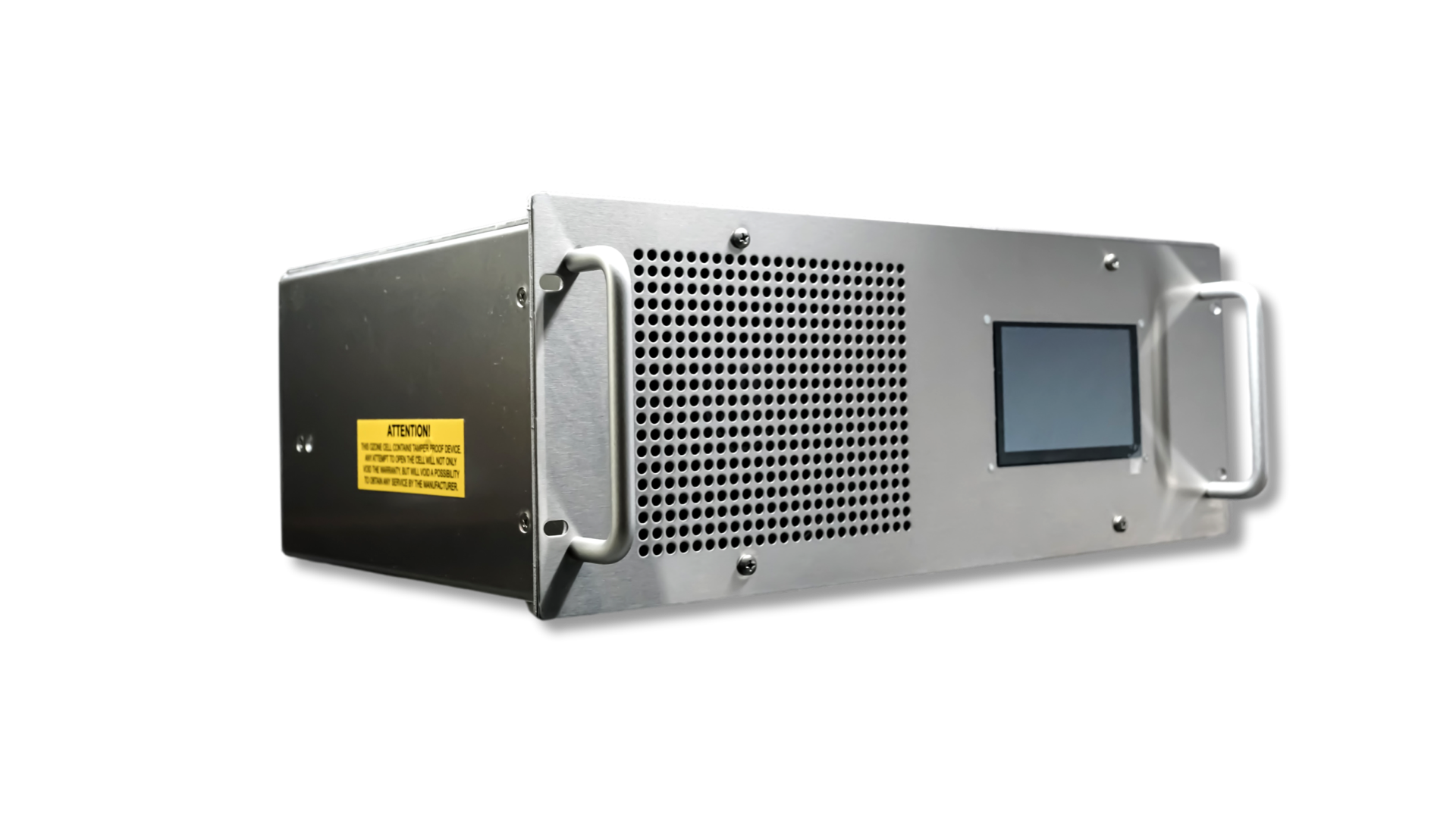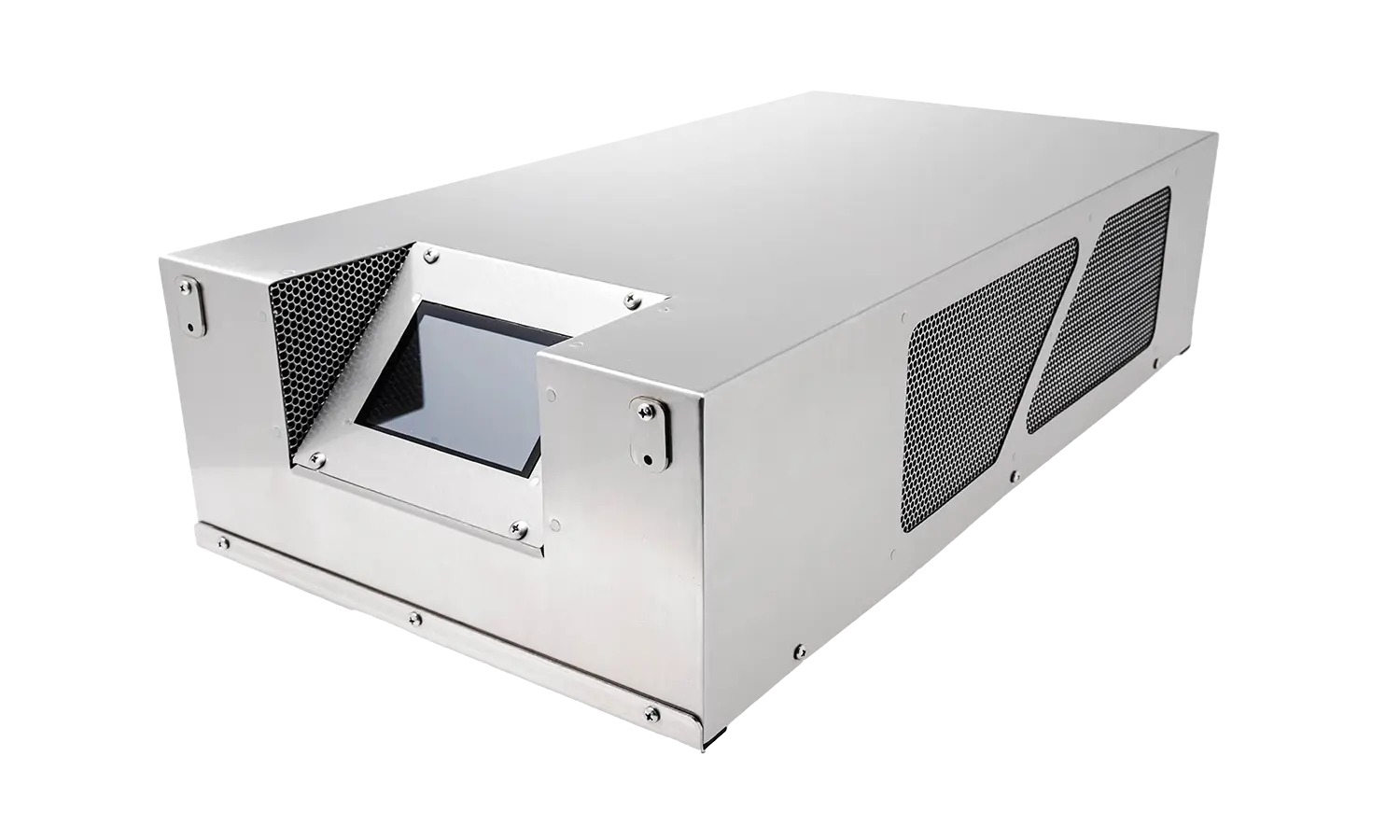Share This Story, Choose Your Platform!
Ozone as Sanitizer in Food Processing

Chlorine has traditionally been used in the food industry to control microbial growth on processing equipment and wash water. Fresh-cut produce is often treated with chlorine to extend its shelf life and reduce the risk of foodborne illness. However, chlorination is dangerous because it may produce toxic and carcinogenic chlorinated organic compounds in water.
Ozone is a universal disinfectant that reacts with contaminants. It suppresses undesirable odours and destroys moulds, bacteria, and viruses. The USDA and FDA have granted GRAS approval for ozone for direct contact with food, including all meat and poultry products.
Comparing Sanitizing Agents in the food sector
Fresh produce and minimally processed fresh-cut products are likely to contain microorganisms. In addition, fungicides, pesticides, and other chemicals used in farming can contaminate food. A simple washing is not sufficient to remove these chemicals. The industry needs to remove contamination and foodborne pathogens like salmonella, E. coli, listeria, and other contaminants to prolong the shelf life of fresh fruits and vegetables and make them safe for sale or further processing. Chlorine is the primary sanitizing agent used in fruit and vegetable washing. However, chloride produces residual by-products such as Trihalomethane. Also, it does not prevent the chemical from accumulating on surfaces. Thermal processing methods are used to inhibit pathogens. This technology, however, affects the quality of foods, such as loss of original flavour, taste, appearance, colour, nutritional quality, etc.
Studies have shown that ozone treatment extends new commodities’ storage life by reducing microbial populations and oxide chemicals. The interest in ozone has increased in recent years because of consumer demand for ‘greener’ food additives, regulatory approval, and a growing acceptance that ozone is an environmentally friendly technology.
How does ozone treatment preserve food?
Ozone can preserve food by inhibiting the growth of bacteria, viruses, and other microorganisms that cause spoilage and foodborne illness. Ozone is a powerful oxidizing agent that can damage microorganisms’ cell walls and membranes, leading to their inactivation or death.
Ozone generators convert oxygen to ozone. The ozone can then be applied to the food in a gaseous or dissolved ozone (liquid form). For example, ozonated water can wash fruits and vegetables, while ozone gas can disinfect food storage areas or processing equipment.
Ozone treatment as a food preservative has several benefits over other methods. It does not leave any residue or aftertaste on the food and does not require using chemicals or additives that may harm human health. Additionally, ozone breaks into oxygen relatively quickly, leaving no harmful by-products.
Is ozone food harmful?
Ozone preservation can be safe and effective when used correctly. The U.S. Food and Drug Administration (FDA) has established maximum limits for ozone use in food processing and storage to ensure that the levels are safe for human consumption and do not harm food quality. However, if ozone is used at excessively high levels, it can hurt food quality. The regulatory approval of ozone as an antimicrobial agent was achieved through a food additive petition process, which evaluated its broad-spectrum biocidal properties and specific conditions for safe use. For example, ozone can cause changes in the texture, colour, and flavour of certain foods. Therefore, it is essential to carefully control the ozone dosage in food preservation to minimize any adverse effects on the quality of the food.
It is also essential to follow good manufacturing practices and food safety guidelines to ensure that ozone is used safely and effectively for the personnel and food equipment.
Advantages of Ozone for Food Processing.
- Ozone treatment is suitable for food processing that follows organic standards.
- Environmentally friendly: Ozone is a natural substance that does not contribute to pollution or harm the environment. Unlike other chemical disinfectants, ozone does not produce harmful by-products or residues that must be disposed of. In addition, Ozone help to reduce water consumption.
- Enhanced food safety: Ozone is highly effective at killing many microorganisms, including bacteria, viruses, and fungi, that can cause foodborne illness. By eliminating these pathogens, ozone can help improve food products’ safety and quality.
- Versatility: Ozone can be used in various food processing applications, including water treatment, surface disinfection, and air purification. It is also effective at removing odours and flavours from food products.
- Cost-effective: Ozone is relatively inexpensive and easy to produce on-site using an ozone generator. It also requires less labour and maintenance than traditional chemical disinfection methods, making it a cost-effective choice for food processing.
- Regulatory compliance: Ozone is an FDA-approved substance for use in food processing, and it is widely accepted in the food industry as a safe and effective method for disinfection and preservation.
What is ozonization in the food industry?
Aqueous ozone
Ozonated water is a highly effective sanitizing solution for washing and rinsing fresh produce, cleaning food processing equipment and surfaces, and sanitizing packaging materials. To produce aqueous ozone, the ozone gas is injected and mixed with the water using a venturi injector. Aqueous ozone is also an integral part of many food company’s sanitation efforts.
Ozone gas
Gas ozone application can improve the storage and shelf life of various products. For example, in cold rooms, ozone can sterilize meat and prevent the growth of harmful bacteria. Ozone gas can control ethylene production for fruits and vegetables, delaying natural ripening and oxidizing it into an antimicrobial compound. It can also leave fruits and vegetables free of pathogens and chemical residues.
More information about ozone in applications in food processing:
OZONE GRAIN & FEED DISINFECTION
OZONE FRUIT & VEGETABLE DISINFECTION
OZONE MEAT, POULTRY & FISH DISINFECTION
OZONE FOOD SAFETY AND SANITATION
Contact us now for more information





